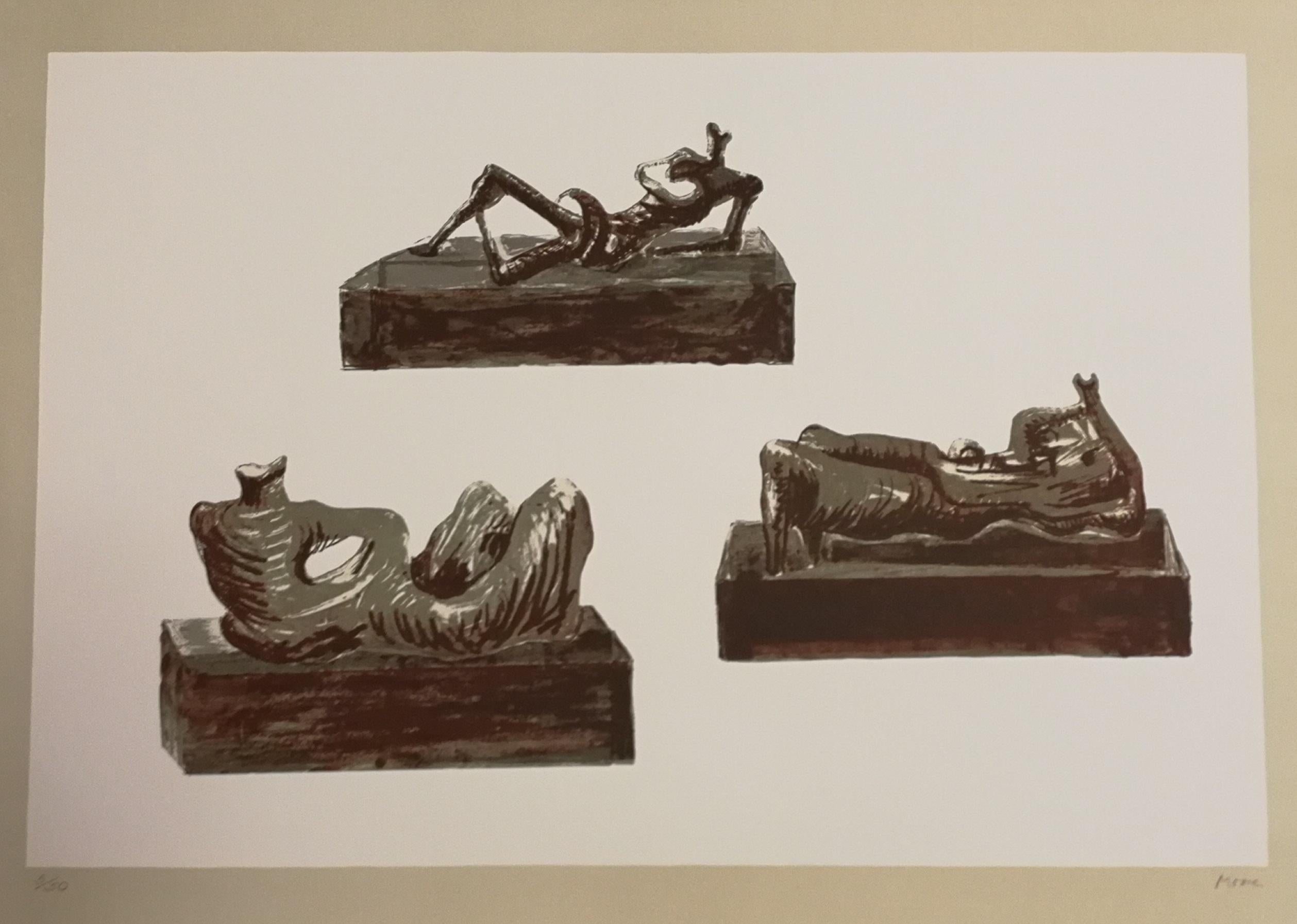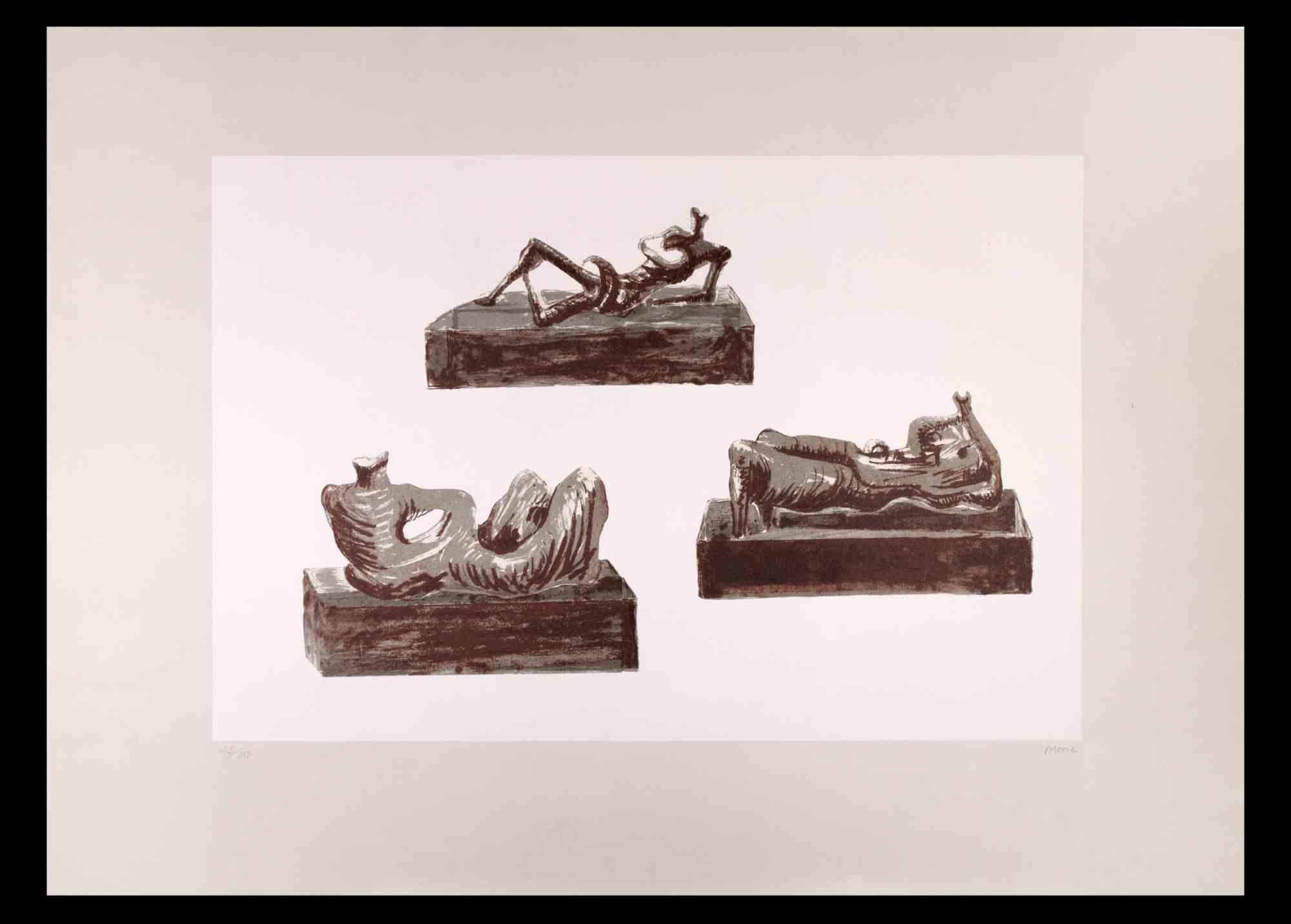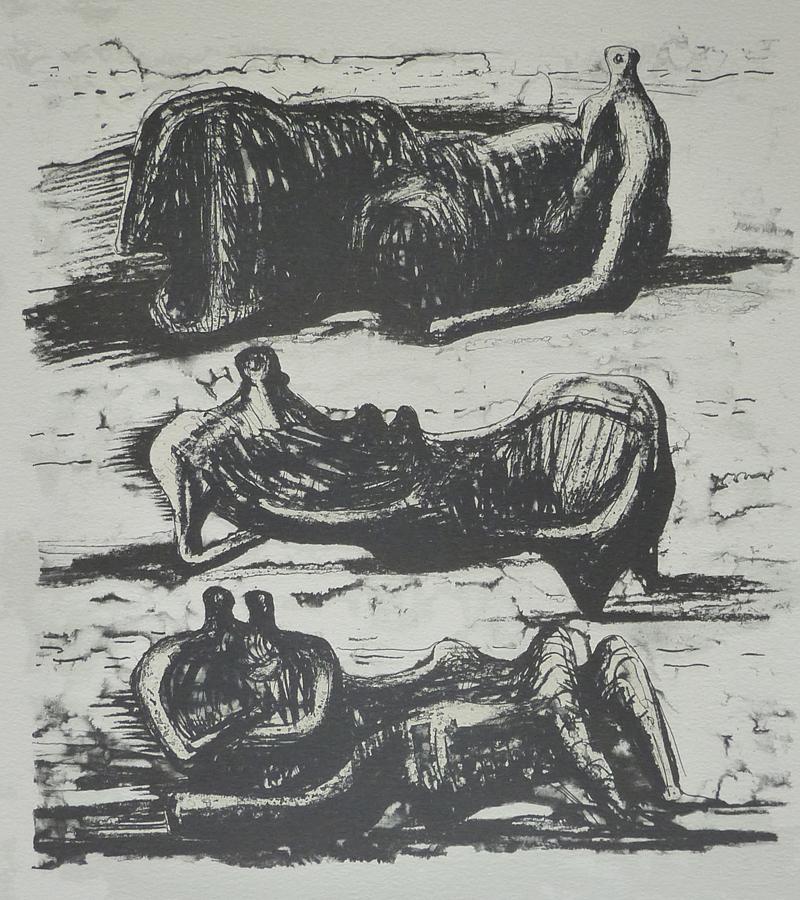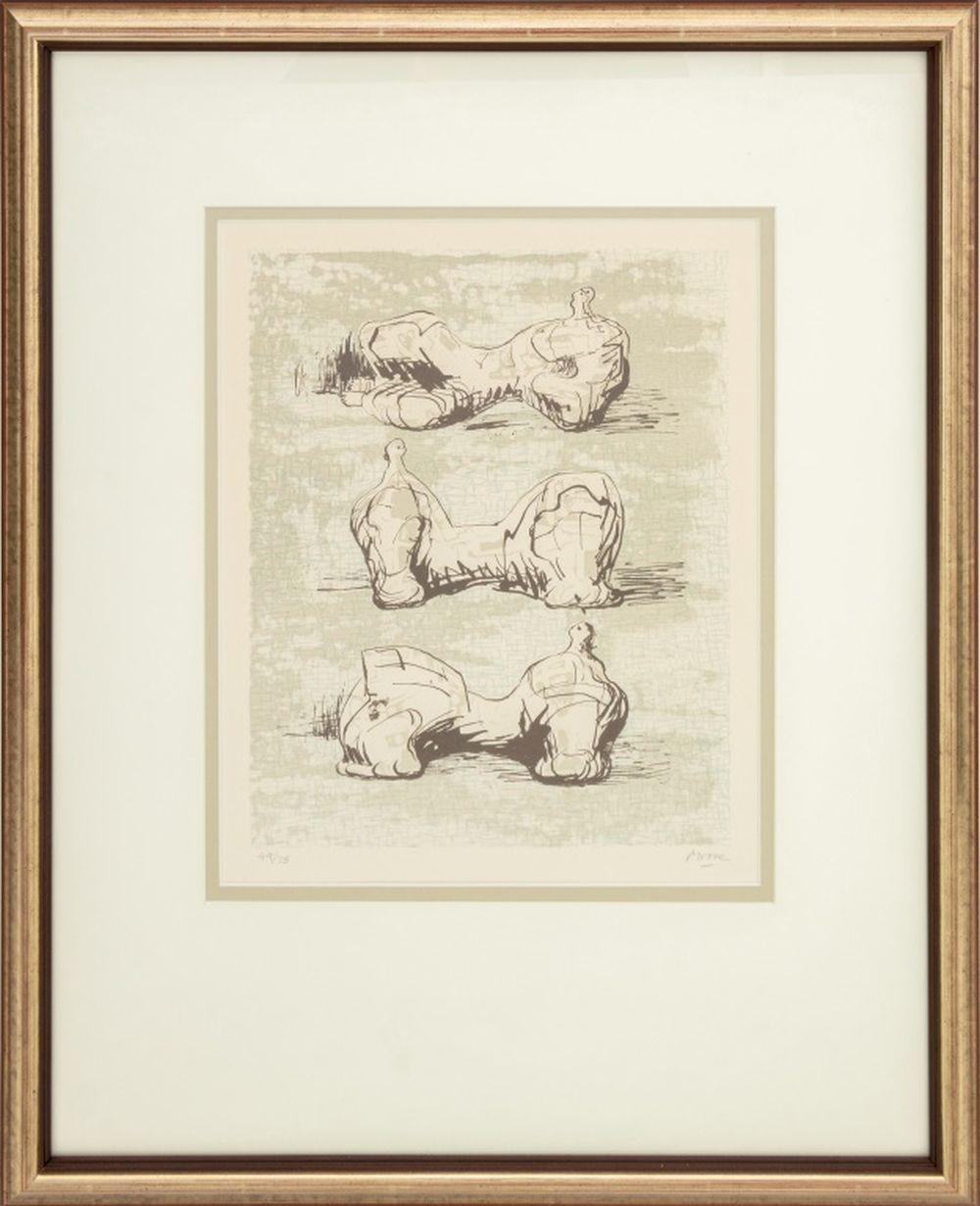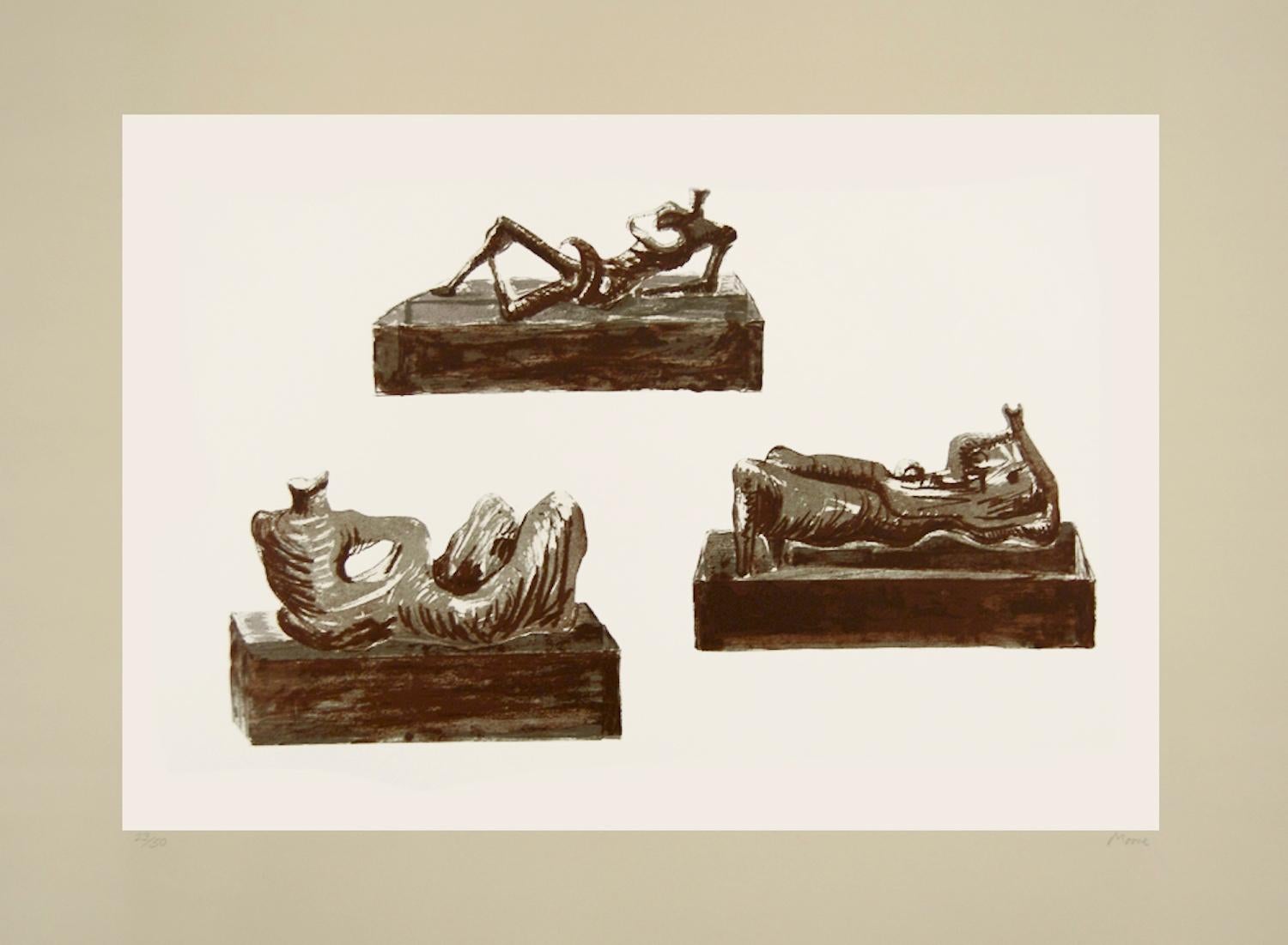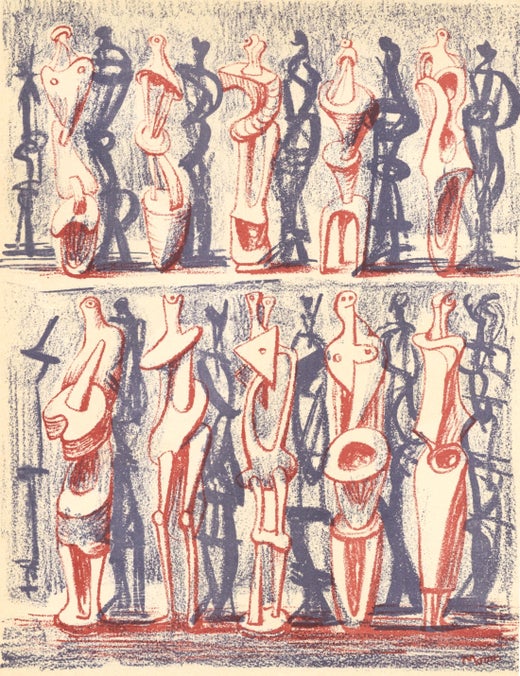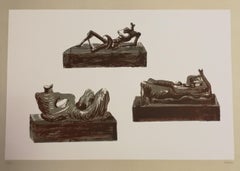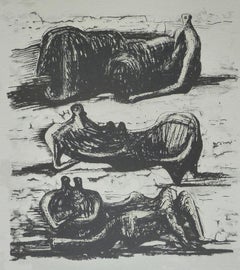Henry MooreThree Reclining Figures1976
1976
About the Item
- Creator:Henry Moore (1898 - 1986, British)
- Creation Year:1976
- Dimensions:Height: 22.45 in (57 cm)Width: 30.71 in (78 cm)Depth: 0.04 in (1 mm)
- Medium:
- Movement & Style:
- Period:
- Condition:Insurance may be requested by customers as additional service, contact us for more information.
- Gallery Location:Roma, IT
- Reference Number:Seller: 777691stDibs: LU65033854201
Henry Moore
Henry Spencer Moore OM CH FBA was an English artist. He is best known for his semi-abstract monumental bronze sculptures, which are located around the world as public works of art. As well as sculpture, Moore produced many drawings, including a series depicting Londoners sheltering from the Blitz during the Second World War, along with other prints and graphic works on paper.
His forms are usually abstractions of the human figure, typically depicting mother-and-child or reclining figures. Moore's works are usually suggestive of the female body, apart from a phase in the 1950s when he sculpted family groups. His forms are generally pierced or contain hollow spaces. Many interpreters liken the undulating form of his reclining figures to the landscape and hills of his Yorkshire birthplace.
Moore became well known through his carved marble and larger-scale abstract cast bronze sculptures, and was instrumental in introducing a particular form of modernism to the United Kingdom. His ability in later life to fulfil large-scale commissions made him exceptionally wealthy. Despite this, he lived frugally; most of the money he earned went toward endowing the Henry Moore Foundation, which continues to support education and promotion of the arts.
Find original Henry Moore art on 1stDibs.
- ShippingRetrieving quote...Shipping from: Roma, Italy
- Return Policy
More From This Seller
View All1970s Contemporary Abstract Prints
Lithograph
1980s Contemporary Figurative Prints
Lithograph, Screen
1970s Contemporary More Prints
Lithograph
1970s Contemporary More Prints
Lithograph
1970s Contemporary More Prints
Lithograph
1980s Contemporary Figurative Prints
Lithograph, Screen
You May Also Like
1970s Abstract Abstract Prints
Lithograph
1970s Abstract Abstract Prints
Lithograph
1970s Abstract Figurative Prints
Lithograph
1970s Abstract Abstract Sculptures
Bronze
1970s Modern Nude Prints
Lithograph
1980s Modern Abstract Prints
Paper, Lithograph
Read More
London’s Osborne Samuel Gallery Makes the Case for Modern British Art
Dealers Peter Osborne and Gordon Samuel have helped revive the popularity of postwar works by such artists as Lynn Chadwick, Kenneth Armitage and Keith Vaughan.
5 Reasons to Collect Art
From discovering new mediums to supporting rising talents, there are many good motives for building a collection of meaningful works. Learn the hows and whys of art collecting with our guide.
